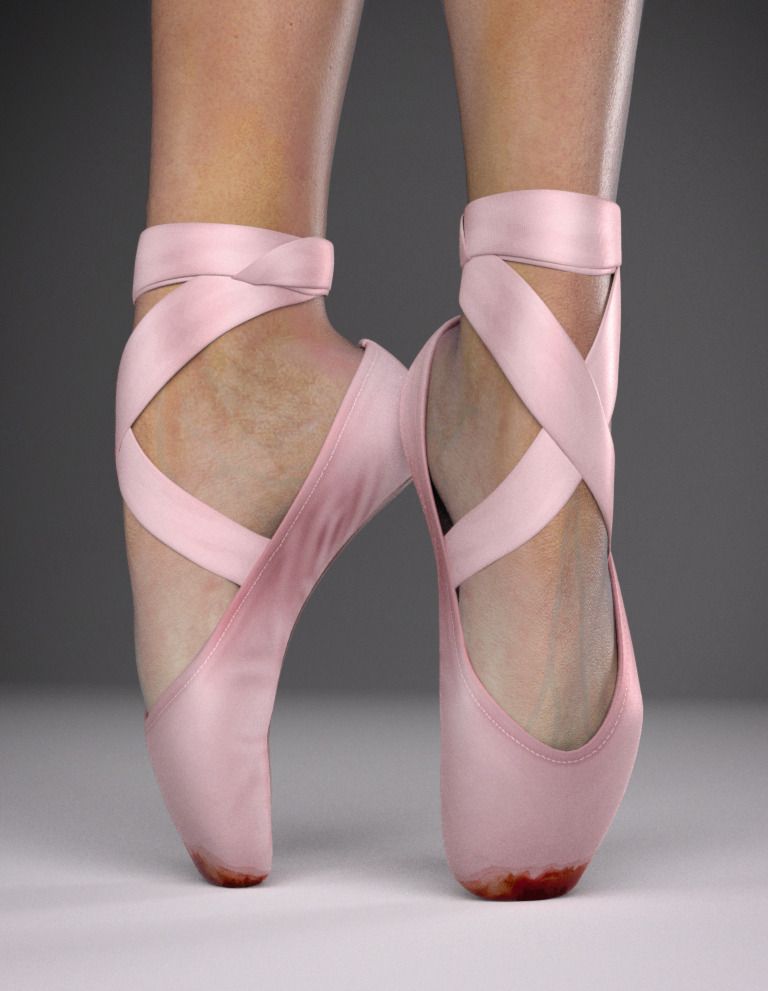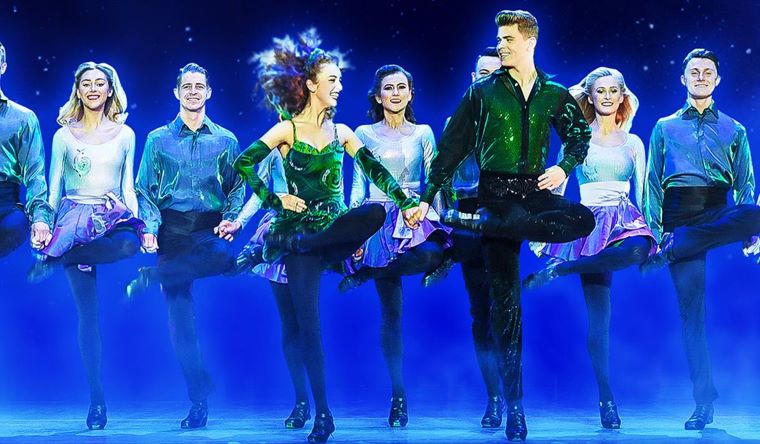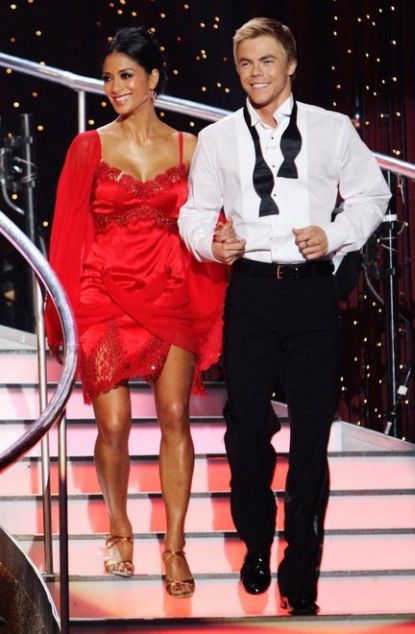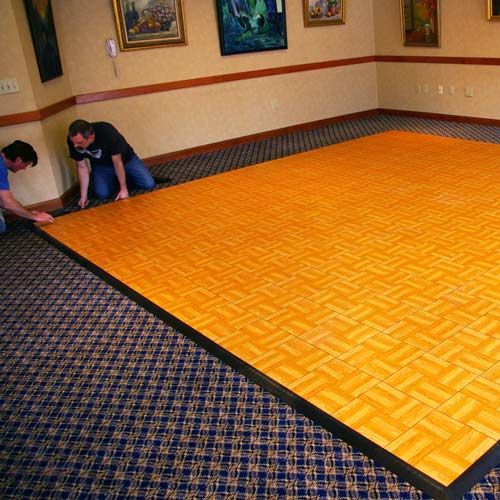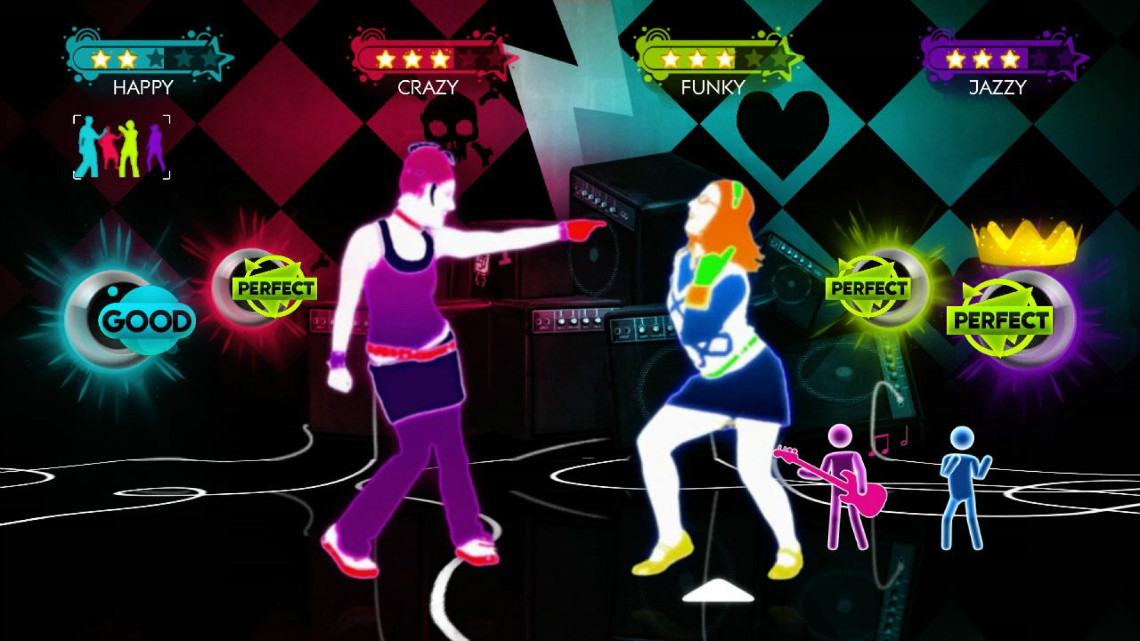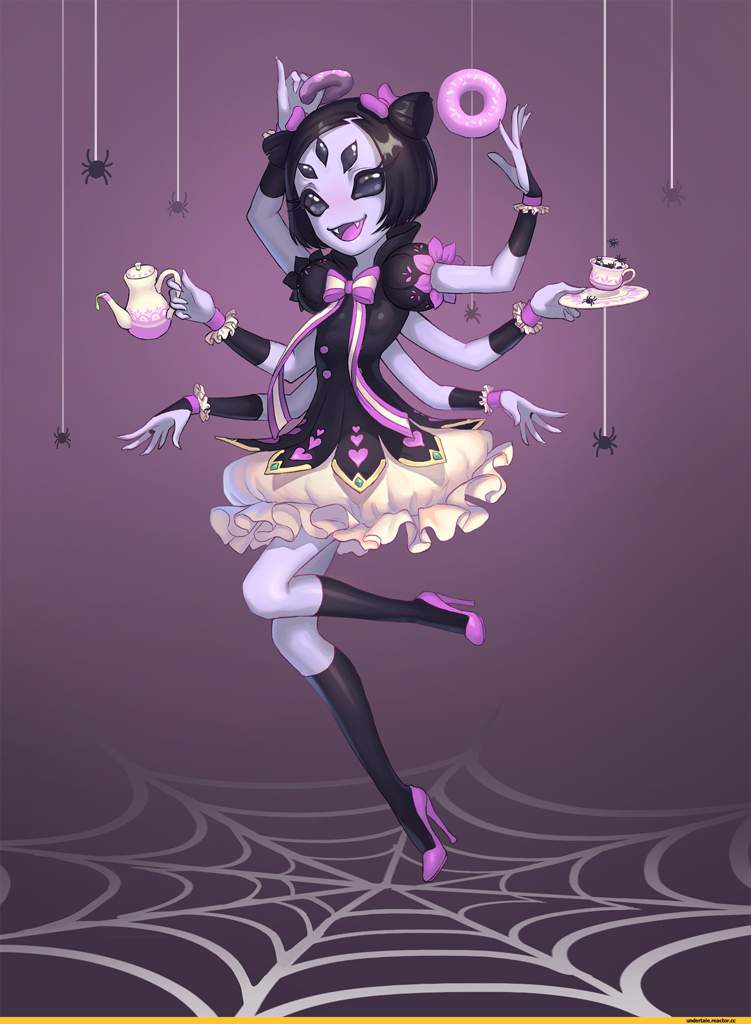How to dance in pointe shoes for beginners
A Beginner's Guide to Pointe Shoes
Whether you’re advancing to pointe and buying your first pair or you’ve been doing pointe work for years, this pointe shoe guide for dancers will help advise you on finding the best pair for you. Learn about the different parts of a pointe shoe and different shoe types available to you, then follow our short fit and feel checks guide to make sure you’re giving your feet what they need. Now, let’s get to the pointe...
Dancing en pointe is truly a work of art, which is why our dancers need all the support we can give them to achieve such complex moves. It is a combination of body strength and shoe which enables you to dance en pointe. The legs, your core muscles and feet all play a part in being able to support yourself, however the shoe is also a vital necessity. Any ballerina doing pointe work will tell you how rewarding it can be, yet likewise how damaging to your feet it can potentially be. If you don’t wear a pair of pointes that are the correct size, fit, and level of support, you could be at risk of harming your feet.
Browse Pointe Shoes
What Are Pointe Shoes?
Pointe shoes are the shoes worn by ballet dancers. They enable them to dance on the end of the toes (en pointe) for extended periods of time while creating a weightless appearance.
What Are the Different Parts of a Pointe Shoe?
This pointe shoes glossary will teach you the basics, taking you from a knowledge novice in 30 seconds!
Box: The solid object at the front of the shoe which encloses the toes and sides of the feet. This is made up of stiffened layers of fabric and glue.
Shank: The stiff insole that provides arch support in varying strengths
Vamp: The fabric part of the shoe that pockets the tops of the toes and foot
Throat: The shoe opening which you insert your foot into
Platform: The flat edge of the box that a dancer balances on
Wings: Part of the box area of the shoe. These support the sides of the feet which helps take pressure off the toes.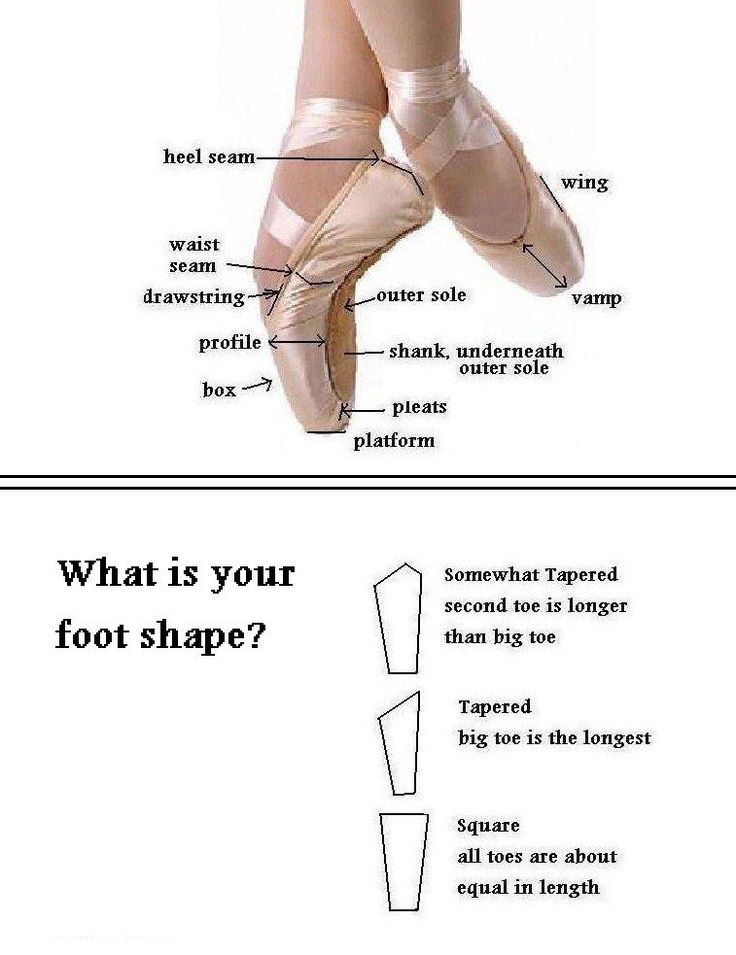
What Size Pointe Shoes should I Buy?
When buying pointe shoes, you’ll be looking for a pair of pointes that have a snug fit with little movement of the foot in the shoe. If you’re a beginner, you should try our demi-pointes to help make the transition from ballet to pointe work a little softer on your feet.
You can find sizing information in product descriptions for pointe shoes, where appropriate guidance is given when necessary to order a certain size bigger or smaller than your standard sneakers size to ensure the best fit. We offer half sizes in some of our pointe shoes, and also let you choose from normal, narrow, or wide fit in some pairs.
Getting the correct fit is a trial and error process so we strongly recommend finding a qualified fitter to fit your shoes. Your feet can change shape over time so what suited you once may change.
If this is your first pair of pointes, we strongly recommend finding a qualified fitter to fit your shoes.
What Are the Different Types of Soles and Shanks on Pointe Shoes?
Pointe shoes have suede soles because they offer flexibility and the correct amount of grip that a ballet dancer needs. Did you know that suede is made by splitting leather to access the softer underside? Children and beginners start their pointe work training by wearing demi-pointes as they work on their technique. The shank of a pointe shoe supports the dancer whilst en pointe, and the strength and length of a shank can vary between pointe shoes. If you have flexible arches, we recommend that a harder shank would be more suited to supporting but also correctly restricting your feet from going too far over the box. But be mindful, because a harder shank can also be harder to break in at the demi area if the foot is not strong enough. Also, the weight of the dancer pressing down on the heel could cause the shank to snap rather than support and mould correctly. A less flexible foot would be better suited to a softer shank to encourage as much movement in the arches as possible, however, this can make pointe work too easy and not challenge the foot enough.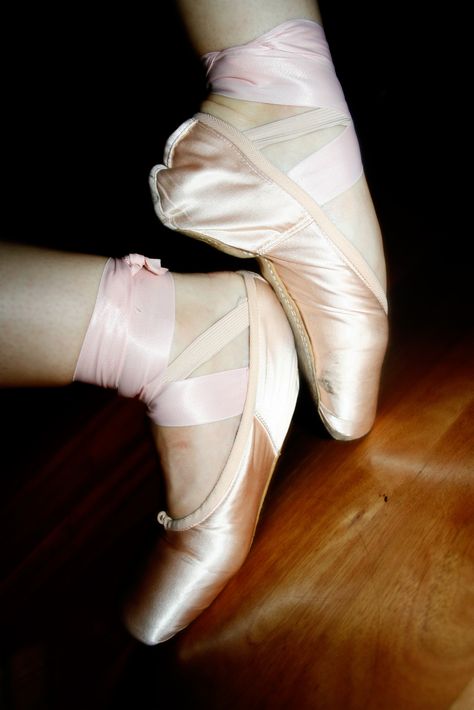 It's important that your foot is working hard in order to build strength! Don't let your feet be lazy! A ballet dancer who has been dancing en pointe for years may have developed their own preference for a certain type of pointe shoe, for example, they may have strong feet and prefer a softer shank.
It's important that your foot is working hard in order to build strength! Don't let your feet be lazy! A ballet dancer who has been dancing en pointe for years may have developed their own preference for a certain type of pointe shoe, for example, they may have strong feet and prefer a softer shank.
What Are Demi-Pointe Shoes?
Demi-pointe shoes are used as a transitional shoe from ballet shoes to pointe shoes for beginners when starting to learn pointe work. Demi-pointes strengthen and condition the foot to be ready for pointe work as they offer more resistance than a standard ballet shoe, meaning the foot has to work harder to bend and extend. They have a softer box in comparison to one that you’d wear when dancing en pointe, which means the shoes should be a little easier on your feet whilst you’re getting used to the feeling of being on your toes. The softer box means that these shoes will not support you whilst en pointe and should therefore not be used to dance in longer than the necessary training period.
What Material Are Pointe Shoes Made of?
All pointe shoes are made with satin uppers. You’ll find that satin shoes are less durable than canvas or leather ballet shoes that you may already be used to, but they do give a gorgeous shine and appearance.
How Do You Look After Your Pointe Shoes?
Make sure to keep your shoes away from water and any stains. You can’t clean your pointe shoes so you need to keep them as pristine as possible. You’ll notice general wear on the sole and tips of your shoes as they collect dirt from the floor while you dance. So Danca have just brought out some pointe shoe covers to help with the battle against stains, but you can’t wear them to dance in. Check out other pointe shoes accessories accessories here.
Want the best knowledge of pointe shoes in the class? Visit our blog to get some invaluable pointe shoes tips from dancers.
See All Pointe Shoes
Learning Pointe as an Adult – Adult Ballet Diaries – learning to dance as an adult
Thinking about learning pointe someday as an adult? Here are some frequently asked questions specifically as an adult ballet dancer – and my experience learning pointe as an adult.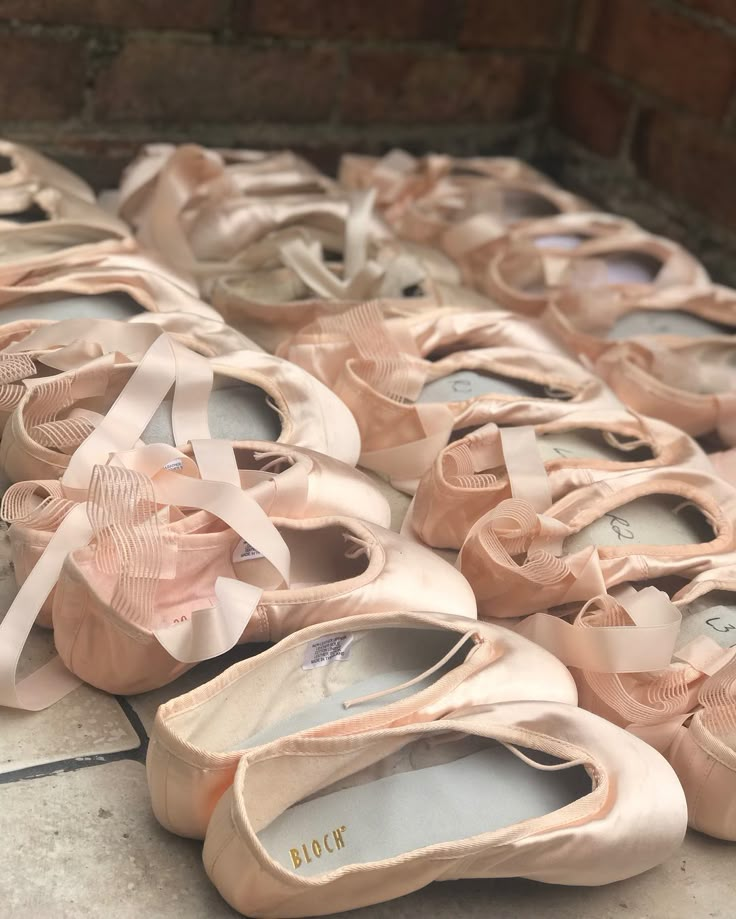 Please note that this is not meant to be technical advice. Please consult your ballet teacher/professional before using any information on this page.
Please note that this is not meant to be technical advice. Please consult your ballet teacher/professional before using any information on this page.
Learning Pointe as an Adult
The other day I went for open classes as my studio is on holiday and I spotted some of my long-time adult ballet dancer friends. After a few, “Hey, how are you? I haven’t seen you for a long time! Where do you dance now?”s I noticed that they are going back to Adult Beginners classes and …. to my surprise, two of them wearing pointe shoes.
I couldn’t help but notice how brand new their pointe shoes were. Obviously they haven’t done too much pointework. I later learned that they decided to try going on pointe, hence, taking the slower paced classes. They then asked me a few things about pointe work since I had a little bit more experience in pointe than them.
That inspired me to write this post.
I’ll start by addressing a few frequently asked questions:
Am I too old to start pointe work?
No.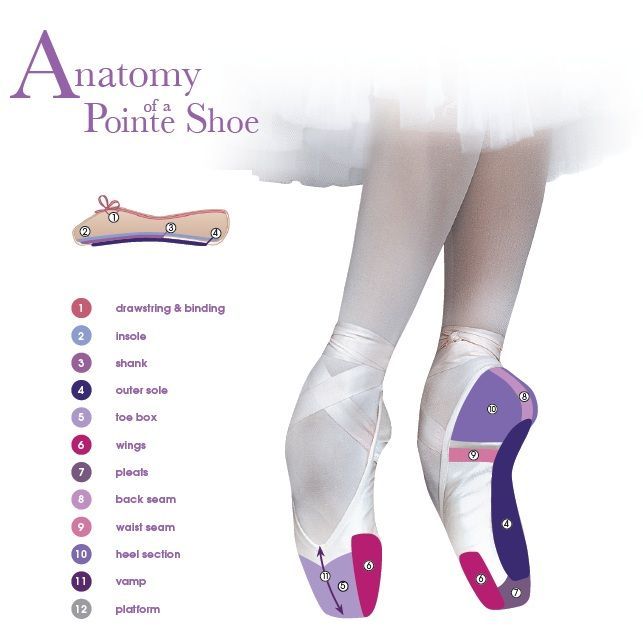 Especially if you’re an adult ballet dancer.
Especially if you’re an adult ballet dancer.
Although, I must say that, that is not the right question. ‘Are you ready for pointe work?’ should be the question you should ask yourself and your teacher.
You’re not too old, if you’re 15 and above. If you’re 70, you can still do pointe work, but you must go in with your eyes wide open, understanding your personal risks. But more about that later.
Will I be able to go on pointe?
Most probably yes.
The crux of the matter is “WHEN”.
Although, there is a small minority of people that can’t go on pointe no matter how much strength or technique they’ve gained. It could be their ankles are way too flexible or too stiff.
When I say too stiff, it means that you can’t form a straight vertical line from your shin to toes when you’re pointing your ankle. So far, I haven’t met either types. I’ve met more people with stiff ankles that became sufficiently flexible enough over time to form that ‘vertical line’
When will I be able to go on pointe?
Let me just start by saying there are many theories of teaching pointe work, but what I’m able to write is the general consensus of ballet professionals.
You will be able to go on pointe if you have sufficiently build up your strength and technique.
There are several am-I-strong-enough-for-pointe tests. One of which is to be able to execute a grand plié in the center, with correct technique of course. The other one is to be able to do fondu on demi pointe in the center. This is for strength alone.
Most people are concerned about strength – before going on pointe. Personally, I think technique is most important, more important than strength. Simply because, you can build up strength for pointe work by doing thousands of releves at the barre on pointe.
Technique is key to preventing injury.
So what if you can ‘stand on pointe’? It doesn’t matter because ultimately, you want to dance on pointe. You’ll have to pirouette on pointe someday. If you are not pointing with 100% energy, or have established a good habit of straightening your knees, you’re going to hurt yourself in the long run, wearing out your knees and inviting all sorts of complicated knee and back problems.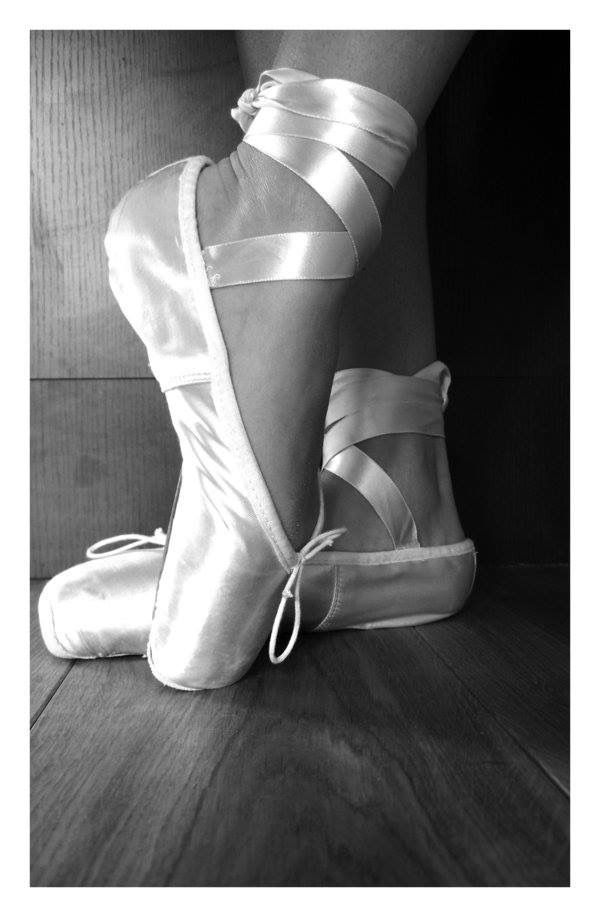 Thus, technique is THE ULTIMATE IMPORTANT thing to establish before going on pointe.
Thus, technique is THE ULTIMATE IMPORTANT thing to establish before going on pointe.
Yes, you can take some risks by going on pointe, if your technique is sufficient. Pointe work in general is less dangerous for adults than young kids whose feet are still soft and malleable. However, if you’re not careful, you may twist or break and ankle, suffer an elbow injury due to a fall, and if you’re older, you might fracture a hip. These are surface injuries. The more dangerous ones are knee and back problems that surface after years of doing the wrong things.
Feet take time to learn to point fully. (My teacher is never satisfied by how hard I point!)
Straightening your knees to its maximum also takes time to establish (Another irk that I irritate the hell out of my teacher)
Your metatarsals need to be flexible to ‘lick the floor’.
All these things I’m still working on – though I’m already up on pointe.
Thus, having a good teacher is crucial! Because you need her guidance and her eye to check for mistakes and dangers.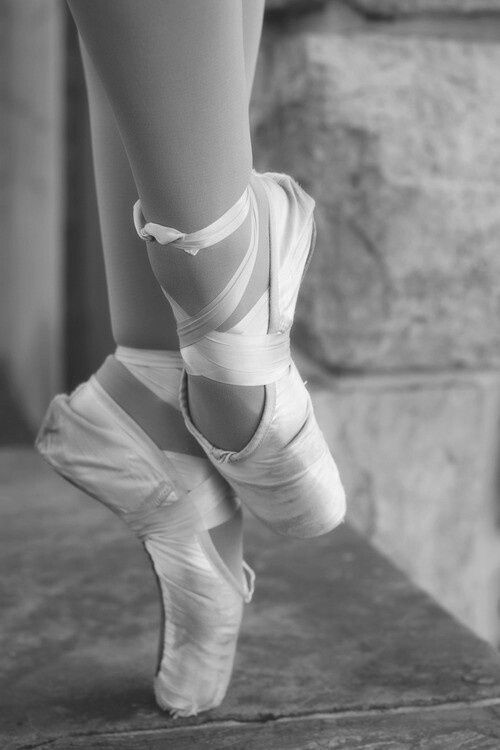
Should I go on pointe?
The common answers that you find on the internet and books are “you must be strong enough”, “you must be dancing for at least 3 years” or “you must be taking at least 3 classes a week”.
For adult ballet dancers, I think the crucial questions I would like to ask is, what kind of classes are you taking? What kind of school do you dance in? Who is your teacher?
My recommendation is that you should have a good teacher, one who is particular about technique (as explained above), and that the teacher should see you at least 3 times a week, and most importantly, know your body well. Is he/she interested in your success and safety?
If the answer is yes, you can approach your teacher about pointe lessons, or ask to wear pointe shoes in class.
This is easier to achieve in a small, intimate studio, rather than a big dance school with lots of different classes and different teachers. Of course, if you’re able to ‘follow’ one teacher, and become familiar with him/her, that situation is also possible.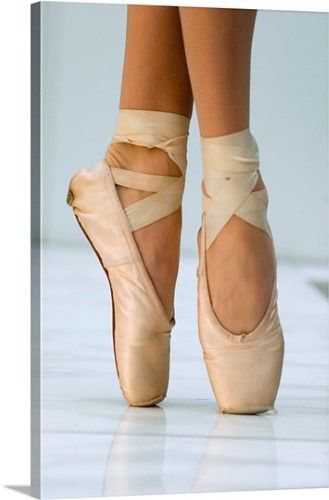
That’s the most important consideration – a good teacher’s eye and guidance for proper technique.
The second very important consideration is – how good is your technique?
This is the problem for most adult ballet dancers, even those who have been dancing for 5-10 years. Most of them go to ‘cold’ studios, taking lots of open classes and unfortunately, very seldom are able to establish a good relationship with a teacher – good enough to care about their safety and progress.
Thus, that is why it is sometimes better to risk humiliation and join a dance school which teach syllabus work, enter their students for exams – of course, you’ll be dancing with youths or teens more than half your age, and in better form than you, more flexible and leaner too. It really depends on what options you have and how much you want it.
In a studio where you have a good learning relationship with your teacher, he or she is more capable of helping you with your weakness in technique and you have a better chance of progressing as you work through them.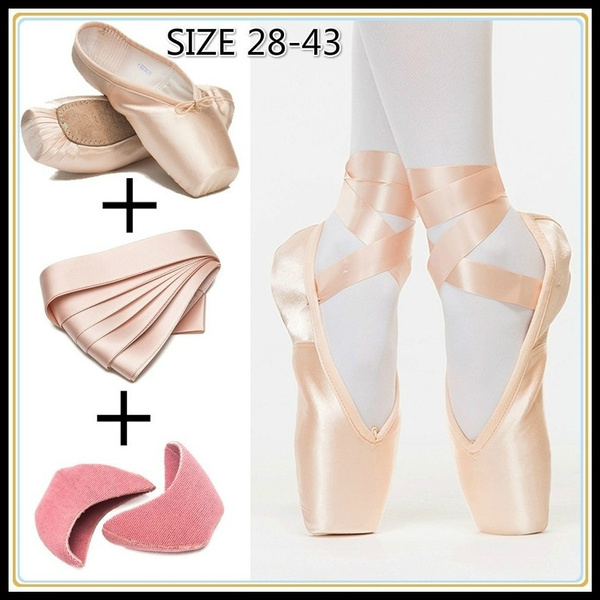
Though, it is more common to have this in a small studio, not all small studios are good because not all teachers in them are good (as with in the big studios).
- Not straightening your knees fully
- Not pulling up
- Not pointing your feet fully (and with lots of energy to spare and ‘come out of the ends of your toes’)
- Wrong ballet posture (with your popo sticking out)
- No emphasis on strength or balance or control – instead just focusing on the ‘moves’.
Dancing on pointe for the first time may feel so foreign, that you might ask why don’t we all start learning ballet using pointe shoes?
However, as you become more familiar with your pointe shoes, you’ll realize that pointe work is simply an extension of all ballet technique…yes, everything matters, from that plié to that tendu in those canvas ballet slippers.
Do lots of releves at the barre.
When you go up, don’t jump up…slowly rise up. This builds strength.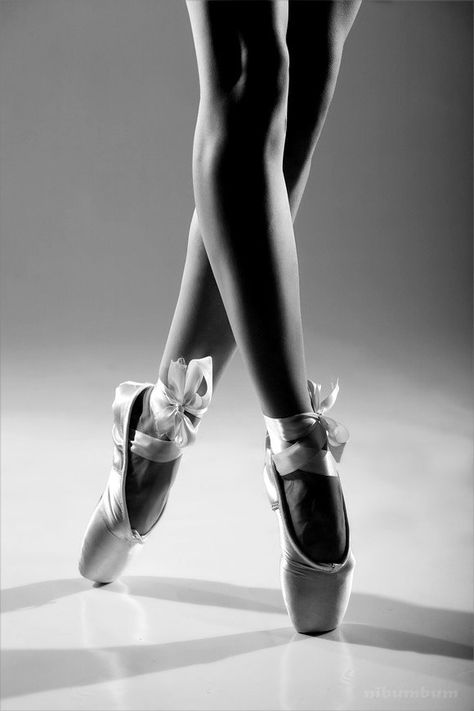
When you come down, don’t plop down. Slowly lower when you come down. Think ‘up’ as you lower yourself. Think of somebody pulling the hairs on the top of your head as you lower down. This builds control and increases the flexibility of the metatarsals.
Lifting your weight ‘off’ yourself on pointe
When you’re on pointe whether it is at the barre or in the center, lift your body weight off yourself using your core strength. Just as we stand in first or fifth position at the barre, we continue to stand very tall. You cannot just rely on ankle strength.
Some teachers call it ‘pull up’. If we allow ourselves to sink into our hips and sit on our legs (like the rest of the non-ballet-dancing population), we’re going to add more stress on your knees and ankles.
Ensure that your ballet posture is correct.
People looking at you on the side should be able to picture an invisible straight plumb line. Stand with an open chest, keep your ribs in, and your pelvis in a neutral position.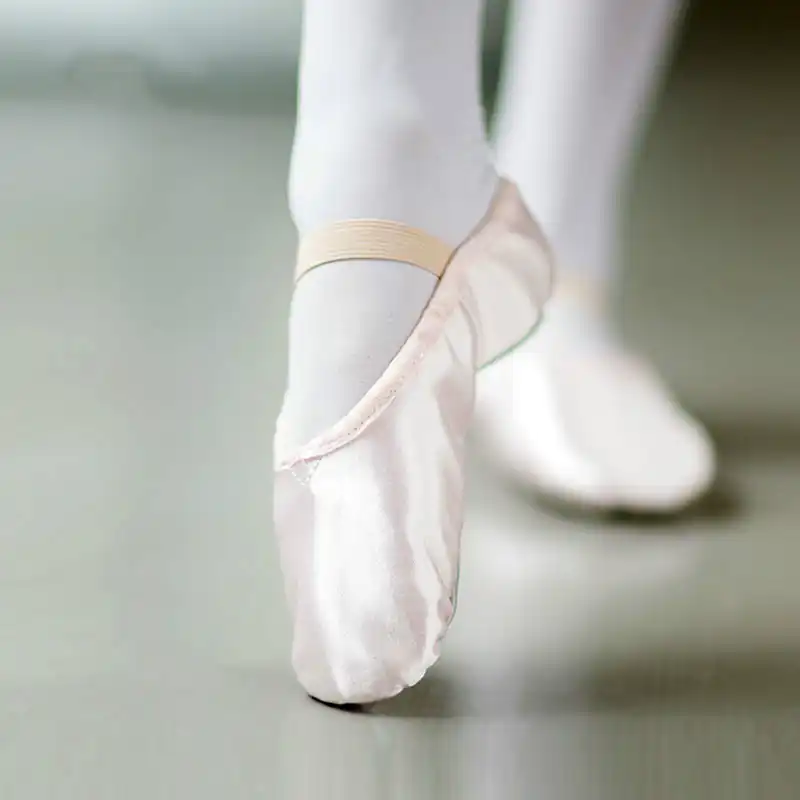 This is all fundamental ballet technique, whether you’re on pointe or not. That is why I say technique is most important!
This is all fundamental ballet technique, whether you’re on pointe or not. That is why I say technique is most important!
Pointe fully …and some more!
You should be 100% pointing even though it is harder in pointe shoes!
It is very easy to relax into a semi-pointing state. Thus, good ballet technical habits should be established first, otherwise it is very difficult to progress in pointe work later on.
Ballet dancers, teachers and other professionals argue a lot in ballet – what is right, what is beautiful, what is wrong, what is ugly, what should go first, how should this step be executed, where the foot should be placed etc etc etc.
Similarly, there are so many different theories about who should learn pointe, when should pointe be learned, what is dangerous and what is not…
Some teachers are overly concerned about safety, some seem to not care at all.
Unfortunately not all teachers know how to teach it right. And how would you know if your teacher is teaching pointe correctly? You can probably gauge by the kind of corrections you get from him/her.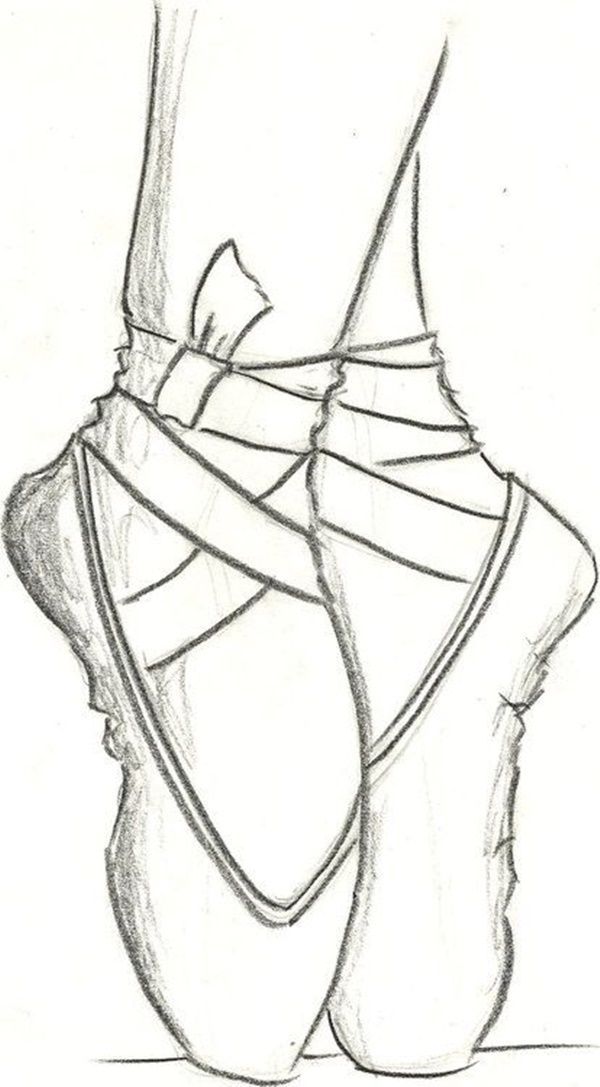
In fact, I think the teacher teaching pointe has a bigger responsibility because as a teacher, they obviously know more than the student.
The way the teacher teaches pointe is vital to a student’s progress and safety.
There are many teachers who seem to do crazy things with teaching pointe – but some really know what they’re doing and they know their students’ feet well. Some like to separate the students into groups to do different exercises, for instance those with strong ankles from the weaker ones, and this also depends on the natural flexibility of their ankles.
Those who teach just because their students insist on going on pointe must learn how to pace and control the class. She could start off with
5 minutes on pointe and moving on to 20 minutes so on and so forth. In that 5-20 minutes, most of it would be doing endless releves to build up strength.
Of course there are teachers who just don’t care. They just let anybody in the class. OR there are students who simply insist on going on pointe.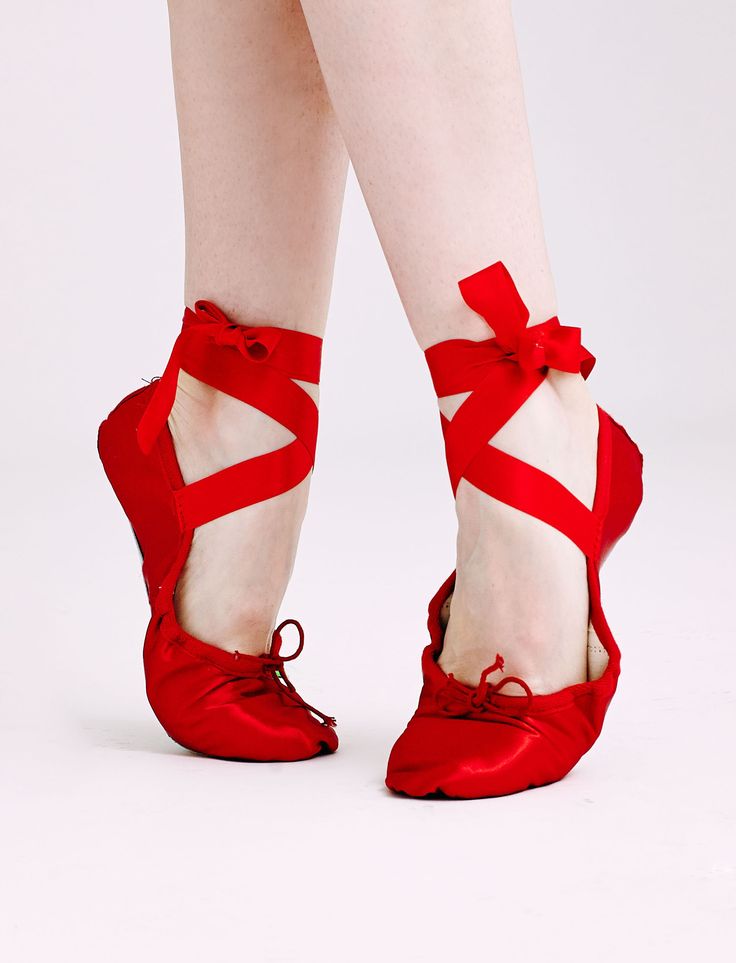 I’ve taken classes in New York City where students who has never done ballet before pay for a pointe class and arrive with pointe shoes in hand, with no ribbons sewn. They then insist on taking the class. The poor teacher had to get some elastics and ask them to do releves with two hands holding on to the barre. She had to move on to give class because there were about 10 of us just waiting for her to get started.
I’ve taken classes in New York City where students who has never done ballet before pay for a pointe class and arrive with pointe shoes in hand, with no ribbons sewn. They then insist on taking the class. The poor teacher had to get some elastics and ask them to do releves with two hands holding on to the barre. She had to move on to give class because there were about 10 of us just waiting for her to get started.
Thus teaching method, a teacher’s watchful eye and emphasis on the correct technique are the most important things to look out for when it comes to selecting a pointe ballet teacher.
While ballet teachers teaching adults pointe work has a fair share of responsibility, ultimately, you as the adult have to take responsibility and decide for yourself. You have to understand the full risks of learning to go on pointe.
My personal take: I think as adults the risks of learning pointe are
- slipping (because of the lack of control and familiarity especially if technique is very weak
- not knowing how to choose the right shoe/fit for pointe
- bunions
- fractured/sprained ankles (from falling and from the lack of strength)
- knee & back problems due to poor/wrong technique
- fractured hips (from those who are older and are susceptible to fall)
- muscle injuries due to over strain/pulling
- excessive tension in the muscles due to compensating for weakness.
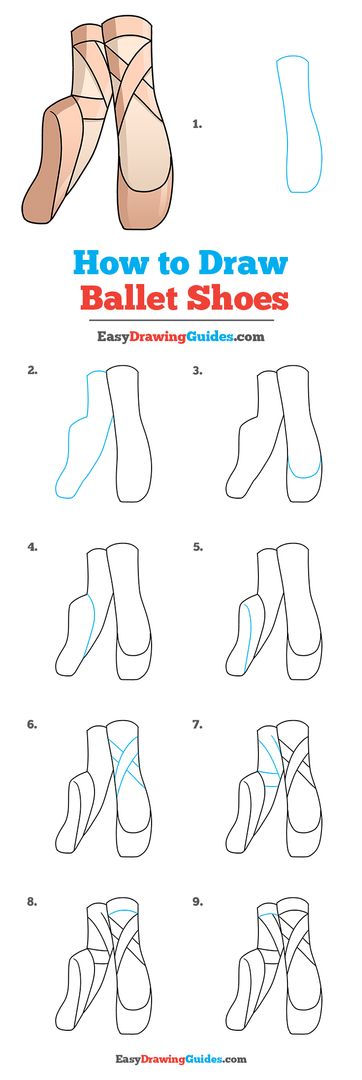
Of course, there are those who will have differing views from me.
I started pointe when I was in my teens, therefore to come back to it again wasn’t so foreign for me. However, I have some experience with a few different teachers with different views. One wanted to put me on pointe after being back to ballet within 4 months, another one would not let me try at all because of my insufficient abilities to make my ‘knees more-than-straight’ and pointing with 100% energy. Another teacher asked me if I’ve been learning pointe for more than 6 months before letting me attend her half-an-hour pointe class. One teacher I know didn’t care if people just wore pointe shoes in class.
My final teacher separates the class into 3 sections. One group with two hands on the barre, the second group with one hand at the barre and the rest of us in the center. This is after the barre warm-up in pointe shoes.
Personally, I’ve found that learning to control your body and feet is one of the hardest things.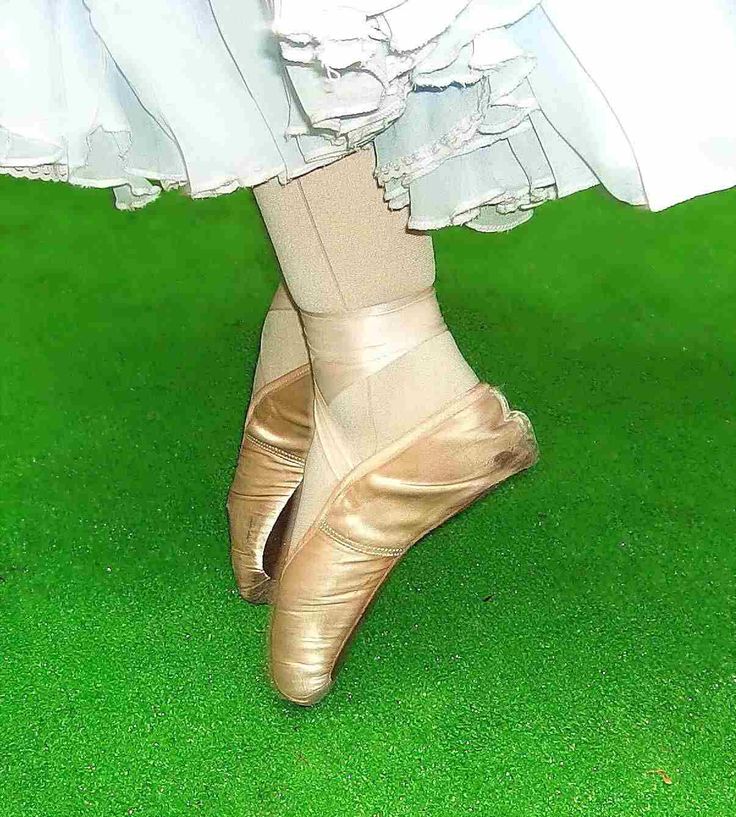 You have to develop a sort-of sensitivity to your feet and metatarsals especially.
You have to develop a sort-of sensitivity to your feet and metatarsals especially.
You actually rely a lot on a strong core, and you have to activate your entire body to lift you ‘off your feet’ rather than rely solely on ankle strength.
My struggles? I tend to plop down on pointe rather than going through demi-pointe. I don’t hold myself all the way down. Also, I need to plié
more on the way down on pointe, rather than letting my heels touch the floor first then plié.
Whatever you struggle with in ballet slippers, whatever wrong technique or weak technique you may have, it is magnified on pointe.
For instance, I can manage my pirouettes just fine (not perfect) but I have this tendency to lean back too much because in actual truth, I struggle to keep my pelvis neutral (due the tightness of my lower back) throughout ALL my center work. Therefore, when turning on pointe, I have the tendency to fall backwards.
I can manage a double or triple pirouette sometimes on ballet slippers, but can barely make one nice clean pirouette on pointe. I can also tell that my get-by-spotting does not work on pointe.
I can also tell that my get-by-spotting does not work on pointe.
I have relative ease doing pique turns on demi-pointes or ballet slippers, and thus I am confident doing them with them too on pointe.
As for strength – they are coming along nicely because we always start pointework with lots of releves and tendus. I also take 3-4 classes a week, and that really helps building up strength without thinking about it.
As for pointe shoe fitting, I was fortunate to get pointe shoe specialists to fit me. I was traveling to New York and had visited Grishko and Gaynor Minden and had booked pointe-shoe fitting appointment. My first pointe shoes were bought in Bloch, in Australia.
I know not everyone gets this opportunity but I would advise against buying them online, especially if they are your first pair. I know some shops overcharge but if they have someone who knows, it is worth going. With that saying, not everyone who works in the retail shop can fit well! Best to ask your dance teacher along.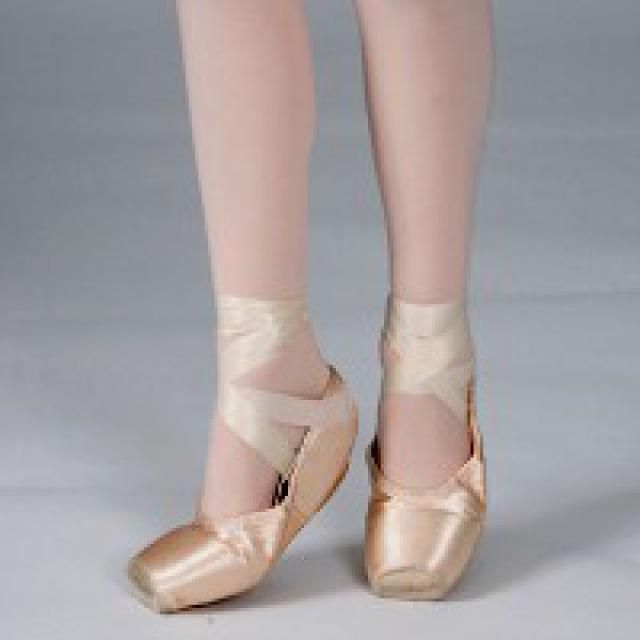
The other struggles I had learning pointe as an adult ballet dancer is really, to find an adult pointe class. They are so rare because of all the requirements for pointe: commitment to dancing and a good teacher, most of all. And of course, in most countries the majority of people learning ballet aren’t the adults.
Hopefully that will change.
Alright, that’s all. This is one long article about learning pointe as an adult ballet dancer. Please feel free to ask any questions! I know that some of you may not agree with me here, but anyway, your comments are always welcomed. We can always learn from each other!
Thank you for reading ‘learning pointe as an adult ballet dancer’!
Learn how to get on pointe shoes? Instructions for beginners
Almost every woman, when she was a little girl, dreamed of becoming a ballerina and conquering peak after peak at the very tip of her fingers. And, it would seem, if in youth it was not possible to go to pointe shoes, then you can forget about a childhood dream? Not at all! There is a chance to learn to dance at your fingertips at any age. The main thing is a great desire!
The main thing is a great desire!
What should adults do?
Before taking up ballet on your own or going to a teacher's studio, you need to get permission from a doctor. This is because the exercises that will be studied load the joints, as well as the spine. Also, such a load is dangerous for varicose veins, so keep in mind that the negative consequences of dancing must be prevented.
Usually in ballet studios and choreographic colleges students are put on pointe shoes only at the end of the first year, and every day is accompanied by intensive training. An adult person will need even more time to master the basic exercises. First of all, you need to properly stretch the muscles of the entire body, and then learn how to balance. To achieve these goals, complexes are made up of various gymnastic exercises, some power load in the form of shallow squats, as well as leg movements at the barre.
First, students hold with both hands, then learn to use one hand, and finally do all the exercises without the help of hands.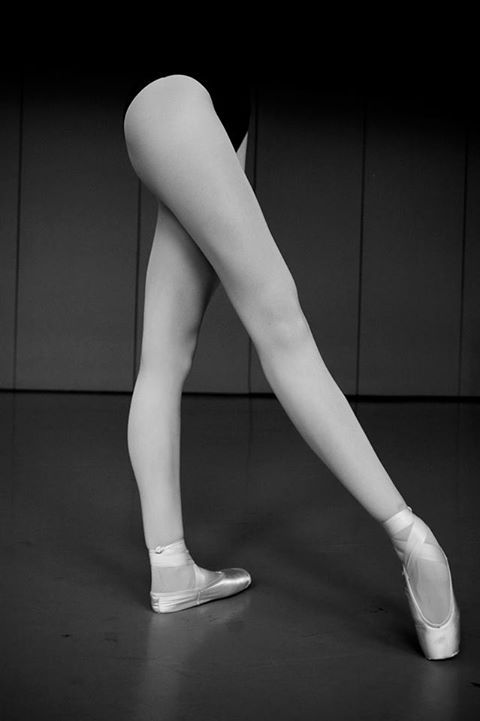 The most common question is how old do you get on pointe shoes. And the answer is unequivocal - the sooner the better.
The most common question is how old do you get on pointe shoes. And the answer is unequivocal - the sooner the better.
How to do pointe shoes at home?
In order to realize your sword, you need to take care that the muscles of the legs are sufficiently developed, as well as develop the instep of the foot. How to get on pointe shoes without pointe shoes? Training should start with the calf muscles, the most common walking at an accelerated pace is perfect here. Running is the next level. Start by choosing comfortable shoes so that walking is as enjoyable as possible, and over time, you can return to shoes with higher heels. Another available exercise is carried out right on the stairs. Stand on the step with your toes so that the heel does not touch the surface. In this position, you need to rise and fall to start about 30 times in 4 sets.
Foot Stretch
This step is best done under the supervision of an experienced professional. If you deal with this issue on your own, using videos and special literature, you can harm yourself, because each person is individual, and when training, one should take into account the peculiarities of health and capabilities.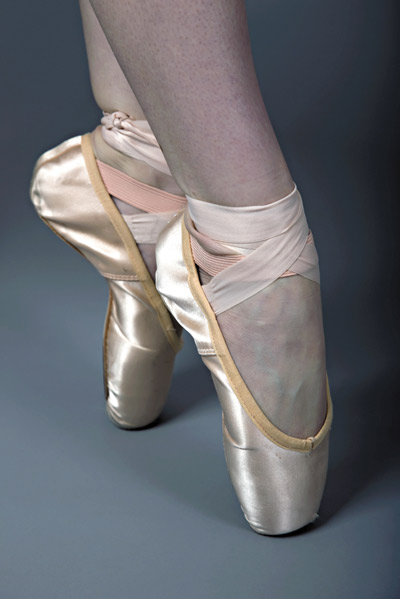 If you are just starting out training, you can try stretching your fingers with the help of someone.
If you are just starting out training, you can try stretching your fingers with the help of someone.
To begin with, warm up your feet thoroughly by sitting on the floor, stretching your legs and asking an assistant to gently press on the arches of your feet until discomfort appears. Be sure to keep your knees straight, after stretching your feet, pull them towards you. But more serious exercises can be performed only under the supervision of a professional, so as not to harm yourself, especially if a person decides that he is ready to do everything to get on pointe shoes.
How to wear?
How to get on pointe shoes? The difference between ballerina shoes and ordinary shoes is in the main purpose. It lies in the fact that the foot should be fixed in a specific position during the dance. Therefore, the rules for wearing pointe shoes are special. To do this, you will need the following components: the pointe shoes themselves, a hammer, satin ribbons, liners, a needle and thread.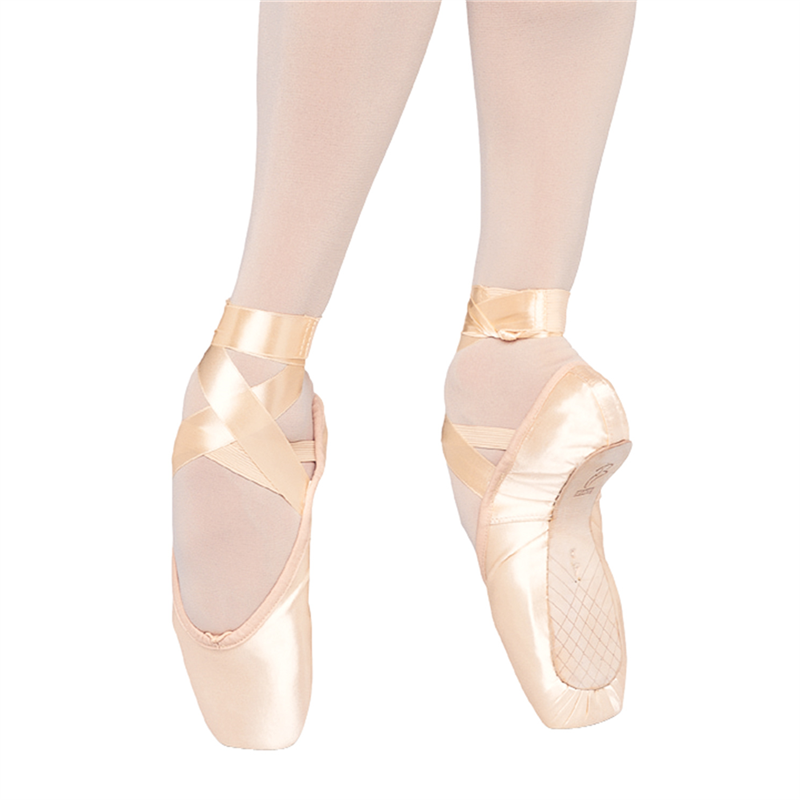
Manual
The first thing you should do when choosing pointe shoes is, of course, to try them on. The toe of the shoes is a kind of box, which should be hard and narrow, while the shoes should tightly wrap around the foot in order to fix the foot in the same position. If you neglect this rule, then soon the uneven load on the fingers will backfire with injuries and constant falls.
Another important rule is that brand new pointe shoes are not to be put on straight away. First you need to prepare them for use. First of all, inspect the sock, if it is too hard, then you need to knead it with a hammer until it is soft enough. Also, in order for the foot to sit comfortably and securely in pointe shoes, you need to take care of special liners. They are silicone, fabric, paper. These options are considered not only the most convenient, but also suitable for repeated use. Pointe shoes are put on as follows:
- inserts must be placed in shoes;
- then wrap the ribbons around the ankle several times, tie them;
- remember that it is not recommended to tighten the tapes too tight, so that blood circulation is not disturbed;
- hide the ends of the ribbons so that they don't get in your way while you dance.
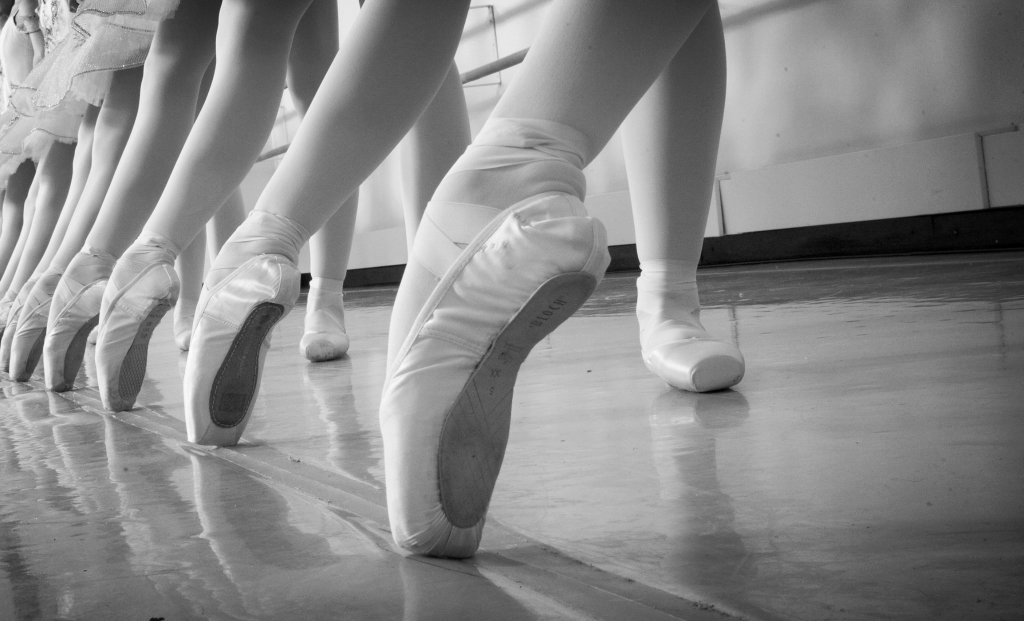
And most importantly, don't start dancing en pointe on your own, you definitely can't do it without the help of a specialist. Otherwise, serious injury may result.
How to prepare for pointe classes?
Not so long ago we published appeals from professional dancers, teachers and doctors not to rush future ballerinas with pointe shoes. Let's try to figure out why an early start can do a disservice in the future and lead to early retirement.
Jean-Georges Noverre said: "The foot is the true support of the whole mechanism of our body." Yes, the foot is the main working tool of the ballet dancer and - almost in the first place - the success of the dancer depends on its condition. Let's dive into the anatomy a bit. How many bones are in the human skeleton? It's a pretty simple question that doesn't have a definitive answer. In modern medical textbooks, you can find out that there are 205-207 bones in the skeleton of an adult. This figure depends on how exactly at an early age your bones grow together. At birth, there are more than 300 bones in the human skeleton, some of them are cartilaginous, which eventually harden, connect and become one. That is, the skeleton continues to change and develop at all stages of our growing up. The pelvic bone, for example, fuses from three to one at the age of 15, and your sacrum will take its final shape somewhere after 20 years. The arches of the foot are formed in the womb, and at the age of 8-12 years, the skeleton of the foot completes its formation. The final spring function of the foot, due to which the muscles and ligaments spring during the jump and correctly distribute the body weight on the supporting leg, is established by the age of 16-20.
At birth, there are more than 300 bones in the human skeleton, some of them are cartilaginous, which eventually harden, connect and become one. That is, the skeleton continues to change and develop at all stages of our growing up. The pelvic bone, for example, fuses from three to one at the age of 15, and your sacrum will take its final shape somewhere after 20 years. The arches of the foot are formed in the womb, and at the age of 8-12 years, the skeleton of the foot completes its formation. The final spring function of the foot, due to which the muscles and ligaments spring during the jump and correctly distribute the body weight on the supporting leg, is established by the age of 16-20.
What happens to feet in pointe shoes? Pointe shoes tighten the transverse arch of the foot, which causes tension in the big toe and its deviation, as doctors say, outwards. Constant pressure on the big toe can most often lead to flat feet and further to hallux valgus (valgus deformity of the toe). Research among students of the Academy of Russian Ballet. Vaganova showed that flat feet, as a rule, do not develop after the age of 16-20, and that problems with the arches of the feet require special attention and prevention during the training of dancers in ballet schools, especially during the first three years in choreographic schools - up to 13 years. Correcting the foot after this age will be much more difficult.
Research among students of the Academy of Russian Ballet. Vaganova showed that flat feet, as a rule, do not develop after the age of 16-20, and that problems with the arches of the feet require special attention and prevention during the training of dancers in ballet schools, especially during the first three years in choreographic schools - up to 13 years. Correcting the foot after this age will be much more difficult.
It may seem that "flat feet" is an absolutely common phenomenon. But for a dancer, this is a serious diagnosis. With flat feet, the fulcrum shifts, which radically changes the biomechanics of the joints and the mechanics of dance, contributes to serious disorders in the musculoskeletal system (bursitis, arthrosis, osteoarthritis, etc.). So what now - to forget about pointe shoes? Well, of course not. It is thanks to pointe shoes that it is possible to create the illusion that gravity does not exist for dancers. Ballet Explorer Lyubov Blok wrote: “No matter how high you stand on your toes, the leg still forms a broken line.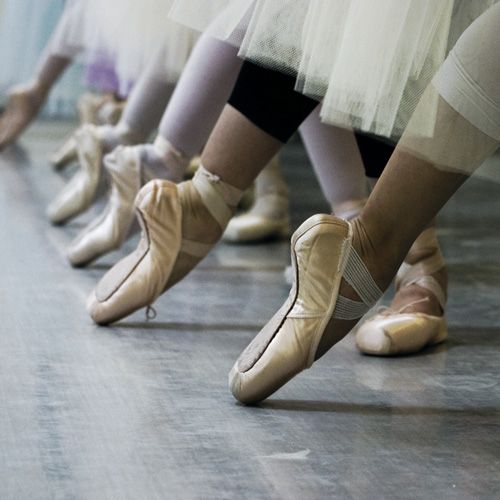 To get the same straight line that we can have in the air, jump, you need to stand on your fingers. According to Block, pointe shoes require "a strongly extended knee, a strongly forward arched instep, a feathered heel, straightness of the entire leg as a whole." So pointe shoes - only after all the bones have hardened enough, the muscles have formed and there will be no problems with balance in postures and when moving.
To get the same straight line that we can have in the air, jump, you need to stand on your fingers. According to Block, pointe shoes require "a strongly extended knee, a strongly forward arched instep, a feathered heel, straightness of the entire leg as a whole." So pointe shoes - only after all the bones have hardened enough, the muscles have formed and there will be no problems with balance in postures and when moving.
We sorted out a little with kids who dream of ballet, but what about those who decide to connect their lives with ballet after 20 years? The good news is that pointe shoes are safer for adults than for children, as the foot is already fully formed. Most likely, you will not become a professional dancer, but many adults can dance for pleasure and even participate in amateur competitions and performances. To understand whether a person can, in principle, stand on pointe shoes, you need to ask him to “pull out the toe”: the leg should form a straight line - 180 degrees - from the knee through the ankle joints and down through the toes.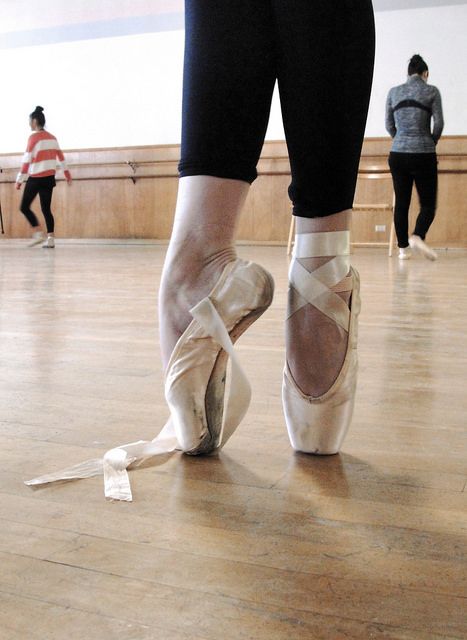 This is given to someone from birth, others will spend a lot of time stretching the joints into such a straight line.
This is given to someone from birth, others will spend a lot of time stretching the joints into such a straight line.
The main problem that can prevent adult students from achieving success is an insufficiently flexible ankle. Ballet classes from childhood make the joints and ligaments of dancers flexible and plastic, regular training pumps the muscles necessary for complex ballet steps. An adult, even in excellent physical shape, does not have even close such experience, and therefore must pay a lot of attention to stretching and the work of the joints. It is important to remember that everyone's natural data is different: someone sits on the twine after two Pilates sessions, and someone after six months of intense stretching can hardly make a bridge. What to do if you find that you belong to the second type of people and mentally call yourself a "log"? There is nowhere without perseverance in ballet, so you need to continue stretching your joints and muscles (after having warmed up well).